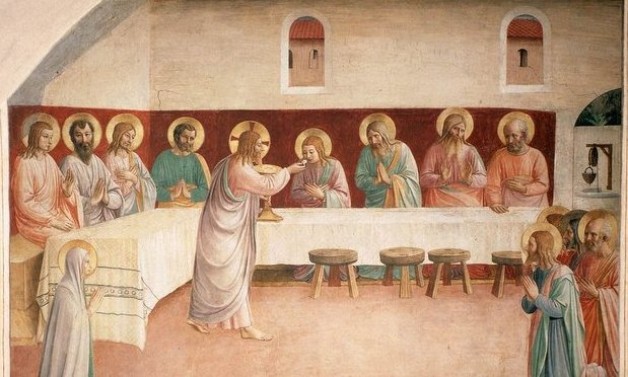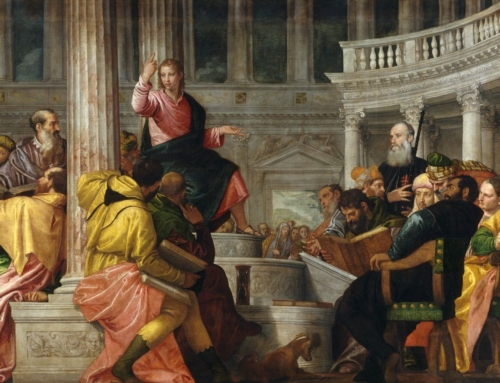In the liturgy, outward words and gestures are performed that express an inward faith in the ability of God to work through our frail humanity in bringing his grace into the world. The liturgy is attuned to each moment of human life, from the new birth of baptism to the preparation for death through the anointing of the sick. Between these two extremes, the sacraments and rites of the Church accompany us and make possible the rite of Christian life: confirmation helps us grow into spiritual maturity as Catholics; the Eucharist nourishes us and gives us strength for the trials of life; confession allows us to regain our foothold after a fall; and finally, matrimony and orders allow individual members of the Church to be directed to service of the whole community, whether as parents or pastors.
Although all Christians receive some number of these sacraments at various intervals, it is not always easy for an individual to see the relationship between the part and the whole. In some cases, such as infant baptism, the recipient is simply unable to personally understand the reality which is at hand. In other cases, we don’t always realize the inner connection between one sacrament and another, particularly if the two are celebrated years apart. For instance, Catholics who are to undertake the sacrament of Christian marriage ought to be confirmed beforehand. For an individual who may have only a vague recollection of receiving the sacrament of confirmation as a callow eighth-grader, it may be difficult to see the connection, and yet by faith we know that the graces received in confirmation help to prepare an individual to undertake the responsibilities and trials of the married life. Sometimes our experience of the sacraments can feel like a punctuated equilibrium, in which it is difficult to see the connection of one sacrament to another.
There are two types of individuals who have a special insight into the sacramental economy on account of their particular vantage point: Christian parents and Christian ministers.
Christian parents have the advantage of witnessing the sacraments that their children receive, each in his or her own order; parents have the opportunity to observe the far reaching effects of each sacrament in the lives of their children. Christian ministers, especially bishops, priests, and deacons, have an even broader opportunity to witness the effects of the sacraments, not just on their own family members, but on all the individual Christians who are entrusted to their pastoral care.
Further, Christian ministers have the duty of celebrating the sacraments and rites of the Church at whatever times they are needed by various individuals, and not only in the linear mode experienced by most families and individuals. One day a deacon might assist at a funeral, the next at a wedding, and on the third day at a baptism—the whole circle of life, although in reverse order.
This rapid juxtaposition of liturgical rites sometimes yields observations, whether amusing or profound, concerning the relationship of these rites. For instance, I recently heard the same responsorial psalm sung at a funeral and at a wedding within a few days of each other: “The Lord is kind and merciful.” It is certainly true, although hopefully the Lord’s mercy will be experienced in a different way by this newly married couple—at least at first! (In fact, this juxtaposition is rather traditional—in the Graduale Romanum of the Vatican Edition, the same basic melody is used for the Gradual of the Requiem and the Nuptial Mass!)
Similarly, each time I proclaim the Gospel as a deacon I receive the following blessing beforehand, whispered by the celebrant: “May the Lord be in your heart and on your lips, that you may proclaim his Gospel worthily and well, in the name of the Father, and of the Son, and of the Holy Spirit.” At a certain point I noticed the similarity of these words to those which are sometimes used as the opening words of the rite of Reconciliation: “May the Lord be in your heart and help you to confess your sins with true sorrow.” There is a profound truth conveyed by the similarity of these formulas: in both cases, it is the Lord who must be speaking through us as we publicly proclaim his Word and privately proclaim our own failure to live in communion with his Word.
In speaking about the interpretation of Scripture, the Catechism of the Catholic Church emphasizes the need to be attentive to the analogy of faith, “the coherence of the truths of faith among themselves and within the whole plan of Revelation” (CCC 114). The First Vatican Council’s Dogmatic Constitution on the Catholic Faith emphasizes the importance of striving to grasp the coherence of our faith: “When reason illuminated by faith seeks with care, piety, and moderation, it reaches, by a gift of God, a very fruitful understanding of the mysteries, thanks both to the analogy with things that it knows naturally, and to the ties that bind the mysteries to one another and to man’s final end.” As Christians, we should strive to grasp more deeply the “analogy of liturgy”: the inner coherence of the sacramental economy and the rites of the Church. In this way, we will more and more be able to enter into the the liturgy, which is the source and summit of our life.
✠
Image: Fra Angelico, Institution of the Eucharist







